Observatory Gallery
| Title | Image |
|---|---|
|
SOFIA's Flight Paths
Caption
This map shows the paths of all of SOFIA’s science flights from 2010 to 2022, over 700 nights of observations, color coded by observation cycle. These include flights out of its home base at NASA’s Armstrong Flight Research Center in Palmdale, California as well as regular deployments to the Southern Hemisphere and deployments to Germany. Color key:
Pink = Early science starting 2010
Credits
Map data ©2022 Google, INEGI Imagery ©2022 NASA, TerraMetrics
|

|
|
SOFIA 2019 Southern Deployment patch
Caption
SOFIA 2019 Southern Deployment patch
Credits
NASA/SOFIA/L. Proudfit
|
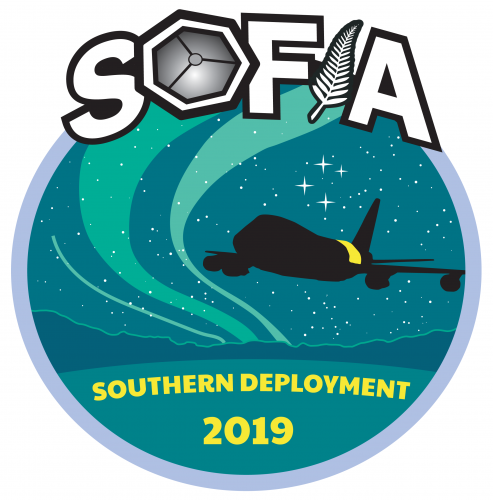
|
|
HAWC+ Instrument
Caption
The High-resolution Airborne Wideband Camera-Plus (HAWC+). This is the only currently operating astronomical camera that makes images using far-infrared light, allowing studies of low-temperature early stages of star and planet formation. HAWC+ includes a polarimeter, a device that measures the alignment of incoming light waves. With the polarimeter, HAWC+ can map magnetic fields in star forming regions and in the environment around the supermassive black hole at the center of the Milky Way galaxy.
Credits
NASA/SOFIA/USRA/Lisette P. Tanaka
|
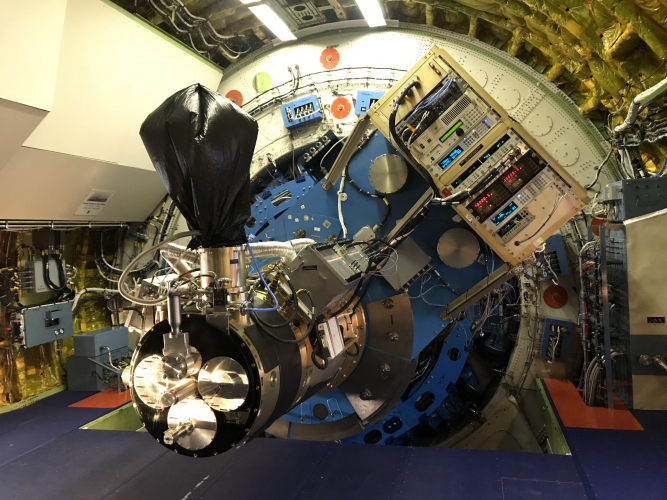
|
|
SOFIA 2018 Southern Deployment patch
Caption
SOFIA 2018 Southern Deployment patch
Credits
Liem Bahneman
|
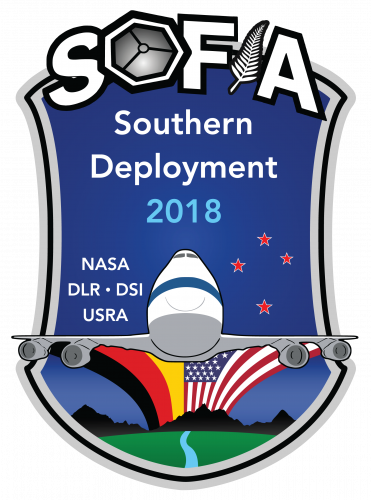
|
|
January 2018 AAS Meeting
Caption
From left to right: Paul Hertz, Harold Yorke, Karina Leppik, Mike Luallen, Thomas Zurbuchen, and Kimberly Ennico Smith at the SOFIA exhibit during the January 2018 AAS meeting.
Credits
Dr. Robert S. Frey
|
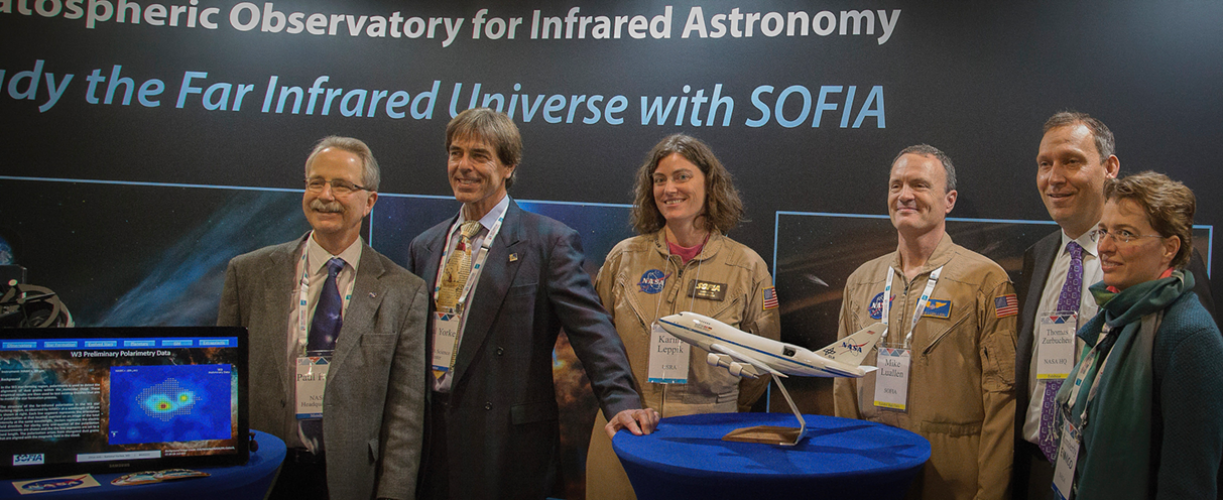
|
|
January 2018 AAS Meeting
Caption
SOFIA Science Mission Operations Director Harold Yorke at the SOFIA exhibit during the January 2018 AAS meeting.
Credits
Dr. Robert S. Frey
|

|
|
January 2018 AAS Meeting
Caption
Eric Becklin gives a plenary lecture at the January 2018 AAS meeting about his fifty-four years in infrared astronomy.
Credits
Dr. Robert S. Frey
|
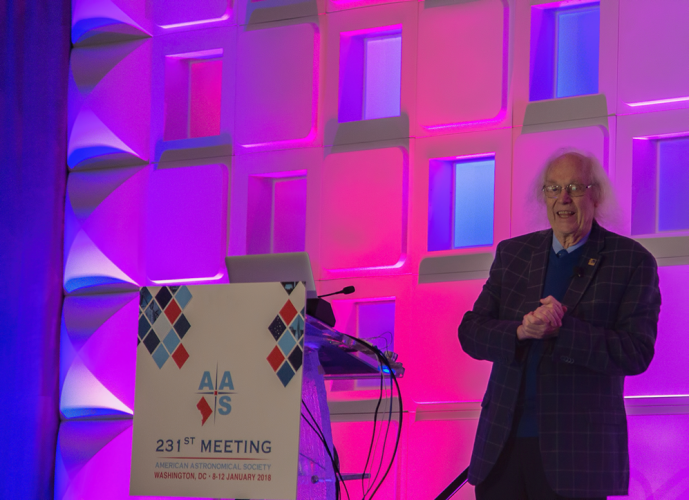
|
|
January 2018 AAS Meeting
Caption
From left to right: Elizabeth Tarantino, B-G Andersson, Fabio Santos, and Enrique Lopez-Rodriguez, presenters at the SOFIA news conference during the January 2018 AAS meeting.
Credits
Dr. Robert S. Frey
|

|
|
January 2018 AAS Meeting
Caption
SOFIA Science Outreach Lead Randolf Klein gives a hyperwall talk at the January 2018 AAS meeting.
Credits
Dr. Robert S. Frey
|
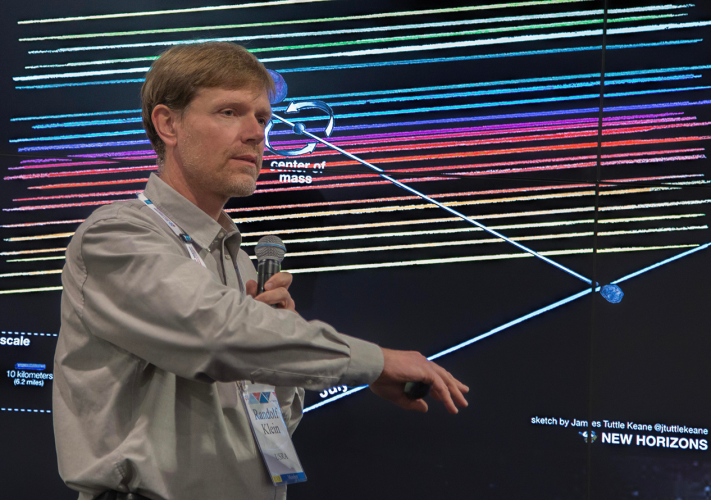
|
|
2017 SOFIA Flights
Caption
SOFIA 2017 flight paths overlaid on global map.
Credits
NASA/SOFIA/Kassandra Bell; Map data ©2018 INEGI Imagery ©2018 NASA, TerraMetrics
|
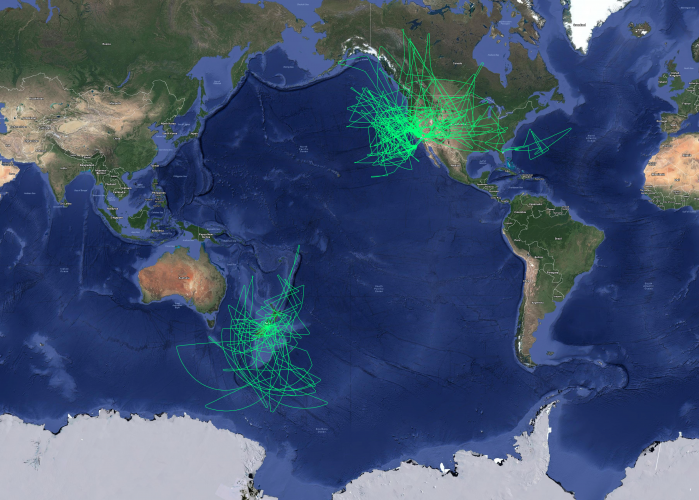
|
|
SOFIA at Lufthansa Technik
Caption
SOFIA is seen at Lufthansa Technik, Hamburg, Germany, preparing for its routine C-Check maintenance period, November 2017.
Credits
Clemens Planck
|

|
|
SOFIA at Lufthansa Technik
Caption
SOFIA is seen at Lufthansa Technik, Hamburg, Germany, preparing for its routine C-Check maintenance period, November 2017.
Credits
Clemens Planck
|
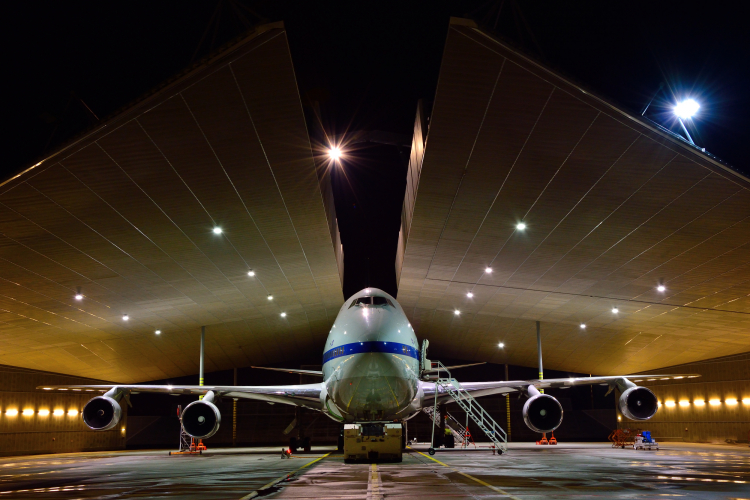
|
|
2017 New Zealand Deployment Flights
Caption
SOFIA 2017 New Zealand deployment flight paths overlaid on the southern oceans.
Credits
NASA/SOFIA/Steve Jensen/Kassandra Bell
|
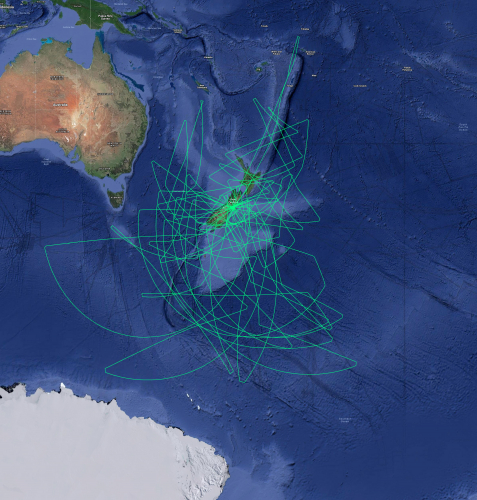
|
|
SOFIA 2017 Triton Occultation patch
Caption
SOFIA 2017 Triton Occultation patch
Credits
Liem Bahneman
|
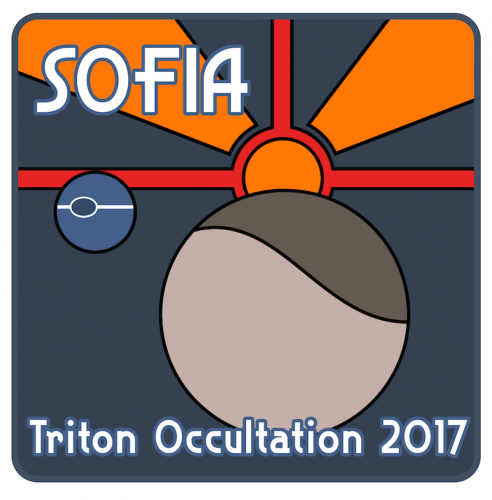
|
|
SOFIA 2017 Southern Deployment patch
Caption
SOFIA 2017 Southern Deployment patch
Credits
Liem Bahneman
|

|
|
HAWC+ Instrument on SOFIA Telescope
Caption
The High-resolution Airborne Wideband Camera-Plus (HAWC+). This is the only currently operating astronomical camera that makes images using far-infrared light, allowing studies of low-temperature early stages of star and planet formation. HAWC+ includes a polarimeter, a device that measures the alignment of incoming light waves. With the polarimeter, HAWC+ can map magnetic fields in star forming regions and in the environment around the supermassive black hole at the center of the Milky Way galaxy.
Credits
NASA
|
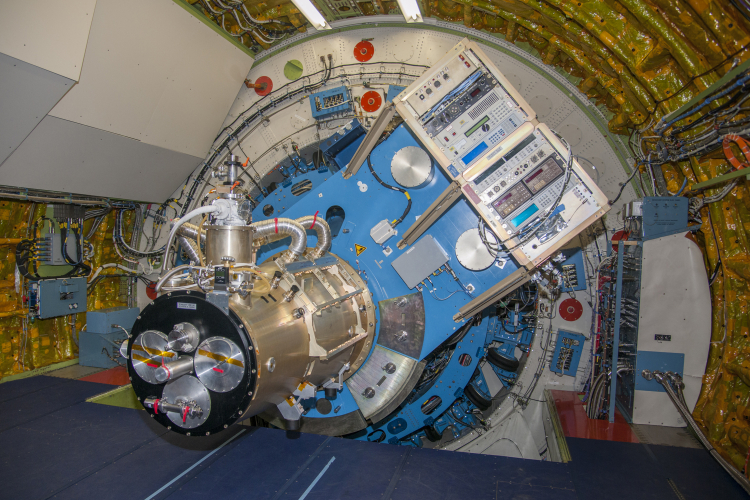
|
|
SOFIA takes off from Christchurch airport
Caption
SOFIA takes off from Christchurch airport, New Zealand, during the 2016 Southern Hemisphere deployment.
Credits
Waynne Williams
|
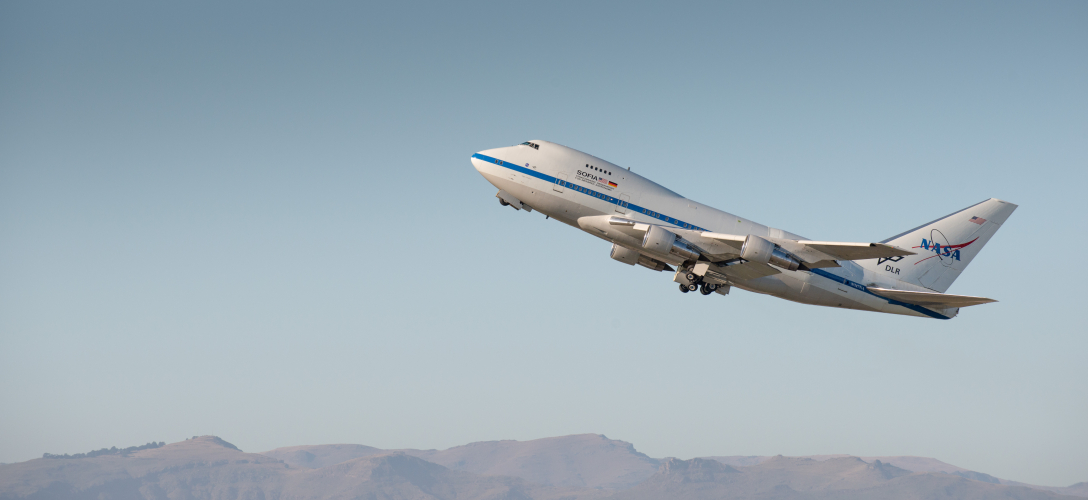
|
|
SOFIA takes off from Christchurch airport
Caption
SOFIA takes off from Christchurch airport, New Zealand, during the 2016 Southern Hemisphere deployment.
Credits
Waynne Williams
|
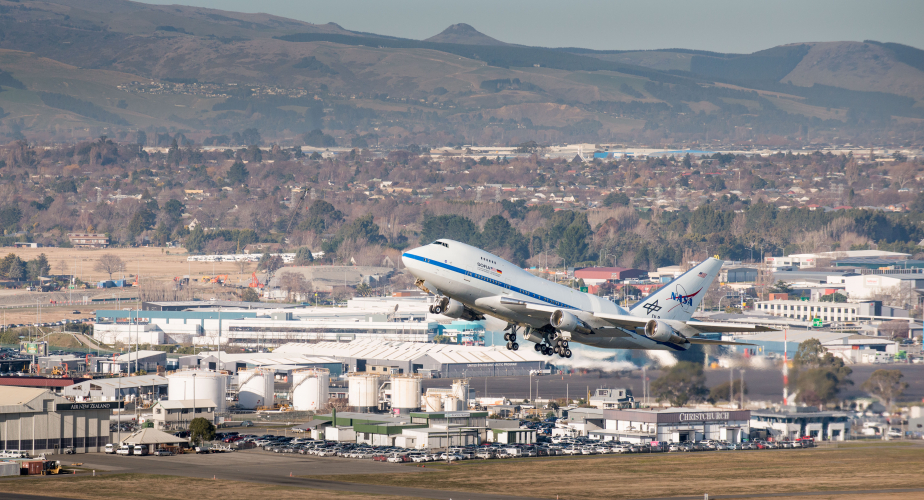
|
|
SOFIA takes off from Christchurch airport
Caption
SOFIA takes off from Christchurch airport, New Zealand, during the 2016 Southern Hemisphere deployment.
Credits
Waynne Williams
|

|
|
SOFIA 2016 Southern Deployment patch
Caption
SOFIA 2016 Southern Deployment patch
Credits
(Liem Bahneman)
|
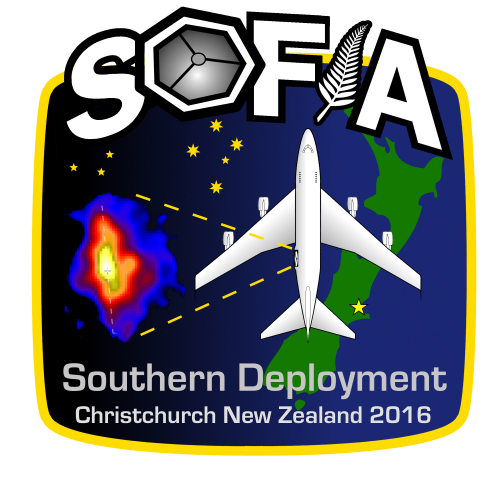
|
|
SOFIA on the National Science Foundation Antarctic Program Facility’s Ramp
Caption
SOFIA on the National Science Foundation Antarctic Program Facility’s ramp facing the Christchurch International Airport terminal and tower.
Credits
NASA/SOFIA/USRA/N. Veronico
|
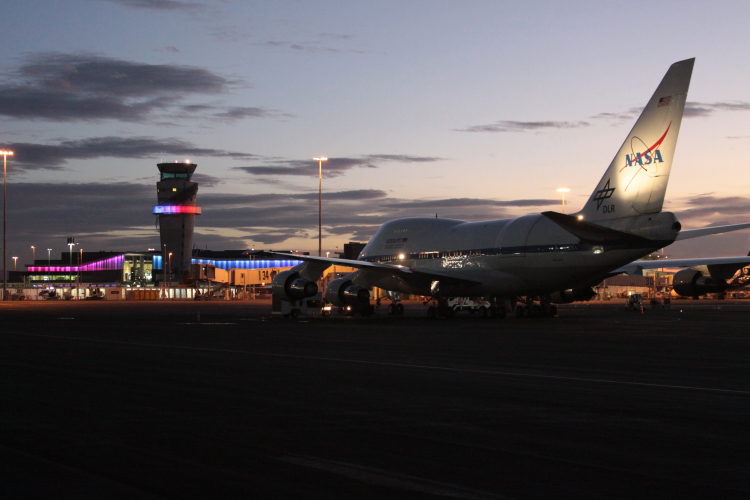
|
|
FPI+ Instrument
Caption
The Focal Plane Imager (FPI+) is the standard tracking camera for the SOFIA telescope with a 1024x124 pixel science grade charge-coupled device (CCD) sensor. As a science instrument it is intended to be used as a fast frame-rate imaging photometer in the 360-1100 nanometer (nm) wavelength range. Its permanent installation on the SOFIA telescope allows for its use while any other science instrument is installed on the main Science Instrument flange. Five Sloan Digital Sky Survey filters (ultraviolet, green, red, near infrared, and infrared) and a Schott RG1000 NIR cut on filter are available for a variety of observations.
Credits
Deutsches SOFIA Institut (DSI)
|
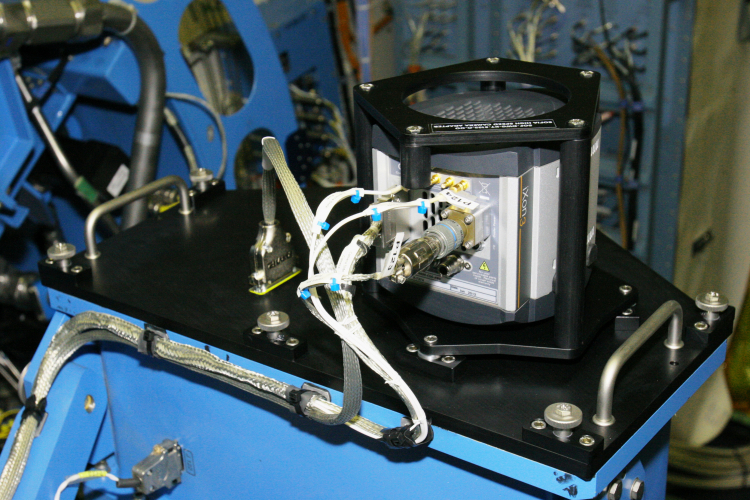
|
|
SOFIA telescope inside cavity
Caption
Extremely rare photo of the SOFIA telescope inside the cavity with the upper rigid door closed shot using a 180-degree fisheye lens. Photographer Greg Perryman was standing with his back against the pressure bulkhead looking aft inside the cavity, and the primary mirror, the back of the secondary mirror, the tertiary mirror, and the Focal Plane Imager (small can on front of telescope in upper left of the photo) can be seen. The large brown wedge dominating the right side of the photo is the telescope cavity aperture, which helps deflect air from the slipstream out of the cavity.
Credits
NASA/SOFIA/USRA/Greg Perryman
|
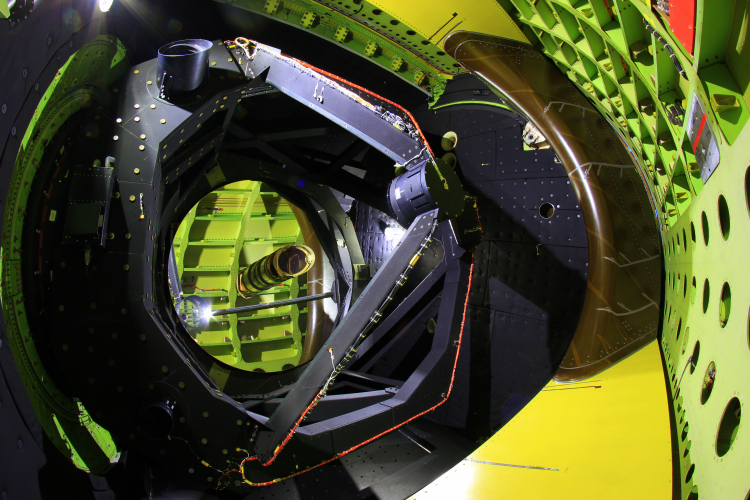
|
|
SOFIA arrives in Palmdale
Caption
SOFIA arrives in Palmdale, Calif., after finishing heavy maintenance at Lufthansa Technik.
Credits
USRA/Greg Perryman
|
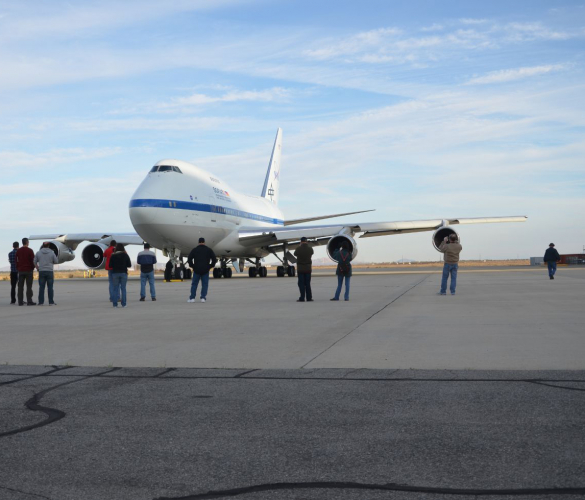
|
|
SOFIA takes off from Hamburg
Caption
SOFIA takes off from Hamburg, Germany, after finishing heavy maintenance at Lufthansa Technik.
Credits
Alexander Golz
|

|
|
SOFIA takes off from Hamburg
Caption
SOFIA takes off from Hamburg, Germany, after finishing heavy maintenance at Lufthansa Technik.
Credits
Alexander Golz
|

|
|
SOFIA takes off from Hamburg
Caption
SOFIA takes off from Hamburg, Germany, after finishing heavy maintenance at Lufthansa Technik.
Credits
Alexander Golz
|
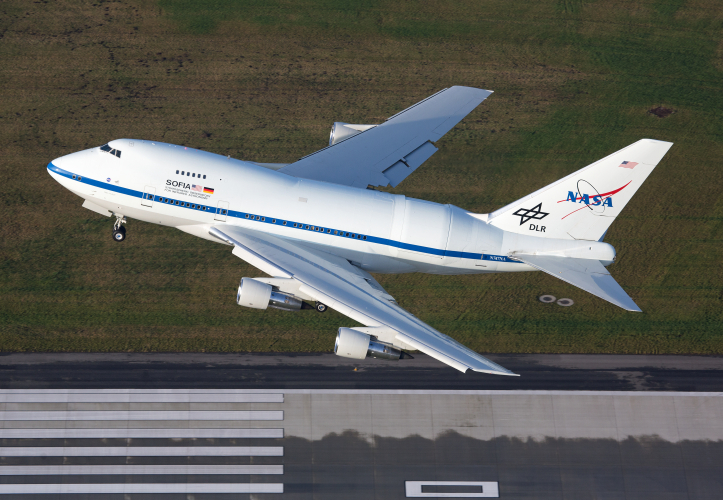
|
|
SOFIA takes off from Hamburg
Caption
SOFIA takes off from Hamburg, Germany, after finishing heavy maintenance at Lufthansa Technik.
Credits
Alexander Golz
|
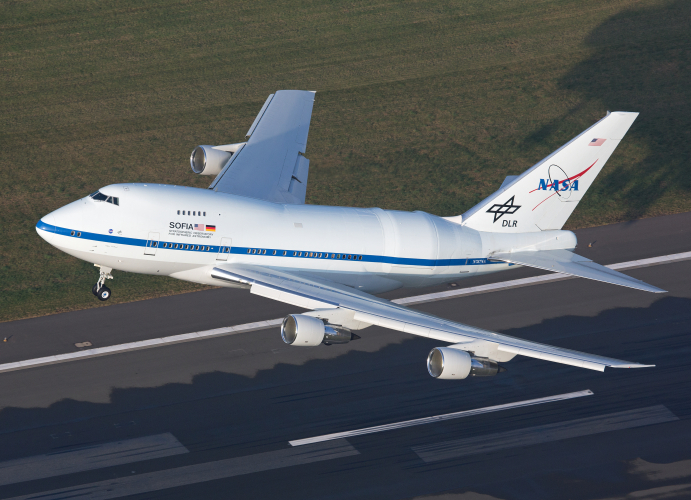
|
|
SOFIA takes off from Hamburg
Caption
SOFIA takes off from Hamburg, Germany, after finishing heavy maintenance at Lufthansa Technik.
Credits
Alexander Golz
|
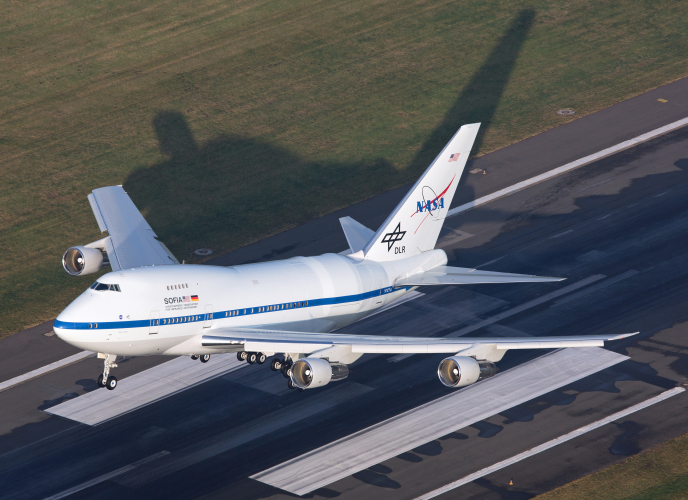
|
|
SOFIA arrives in Palmdale
Caption
SOFIA arrives in Palmdale, Calif., after finishing heavy maintenance at Lufthansa Technik.
Credits
USRA/Greg Perryman
|
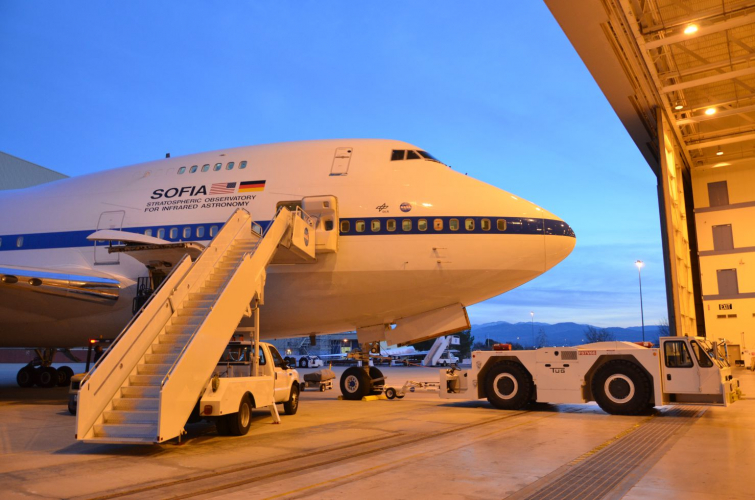
|